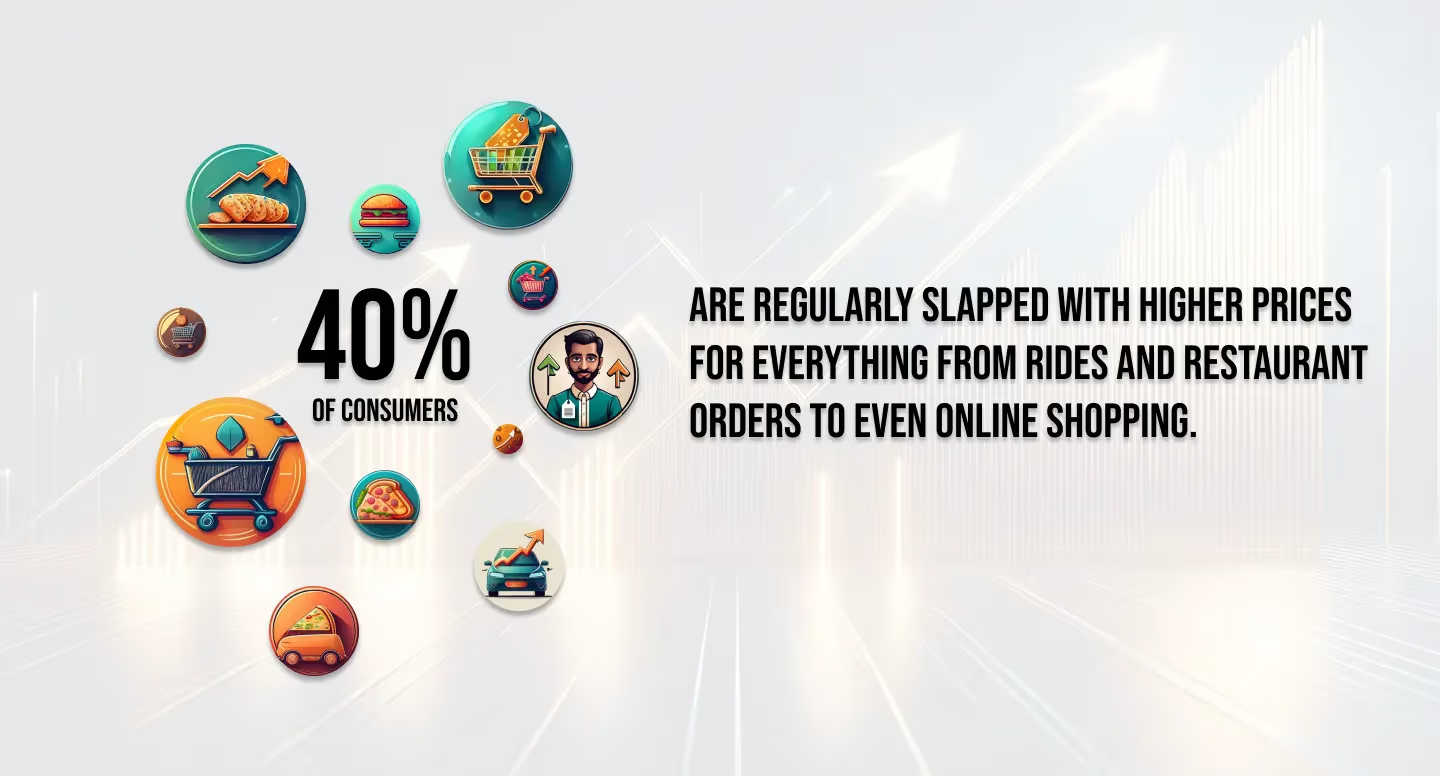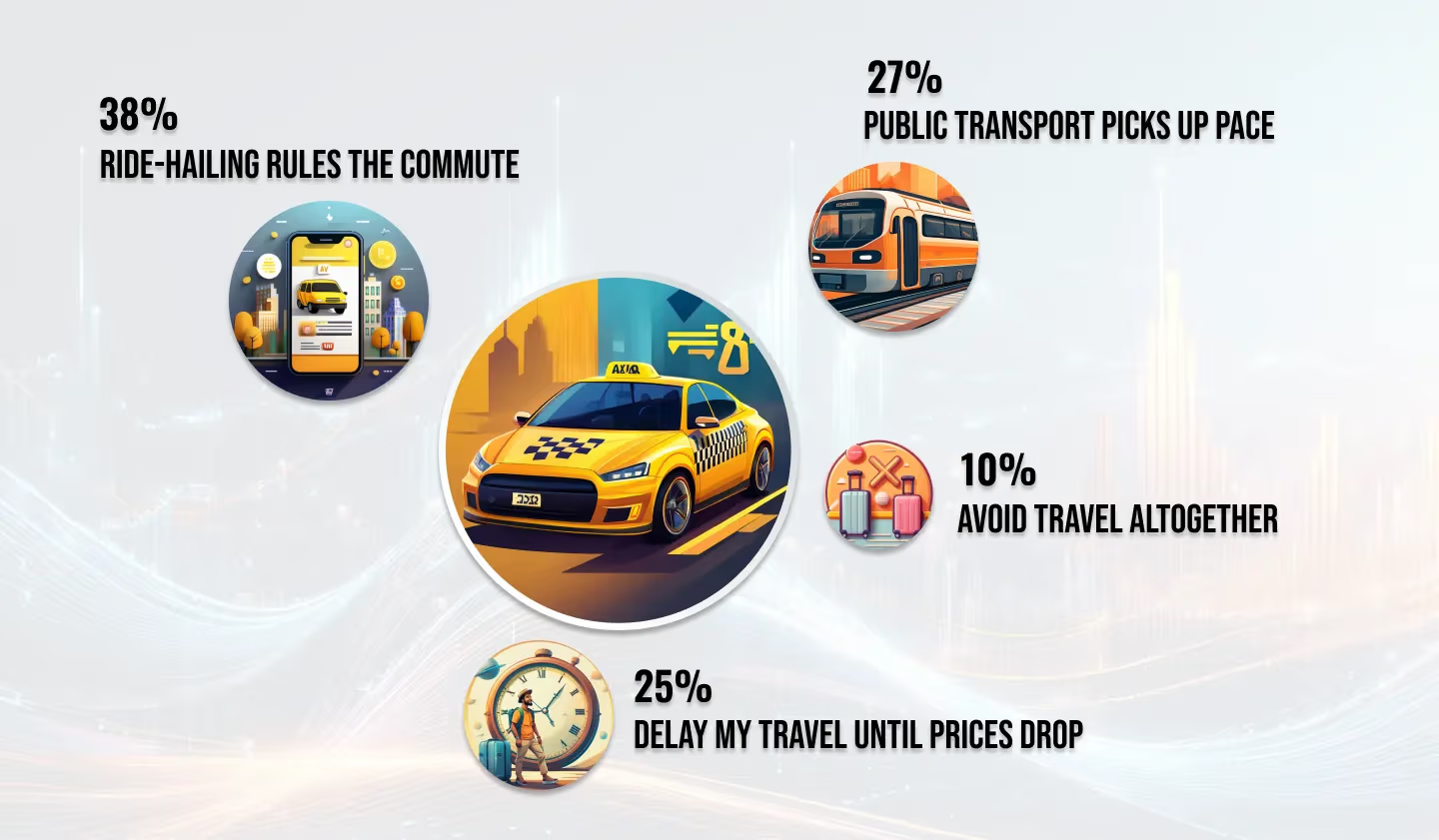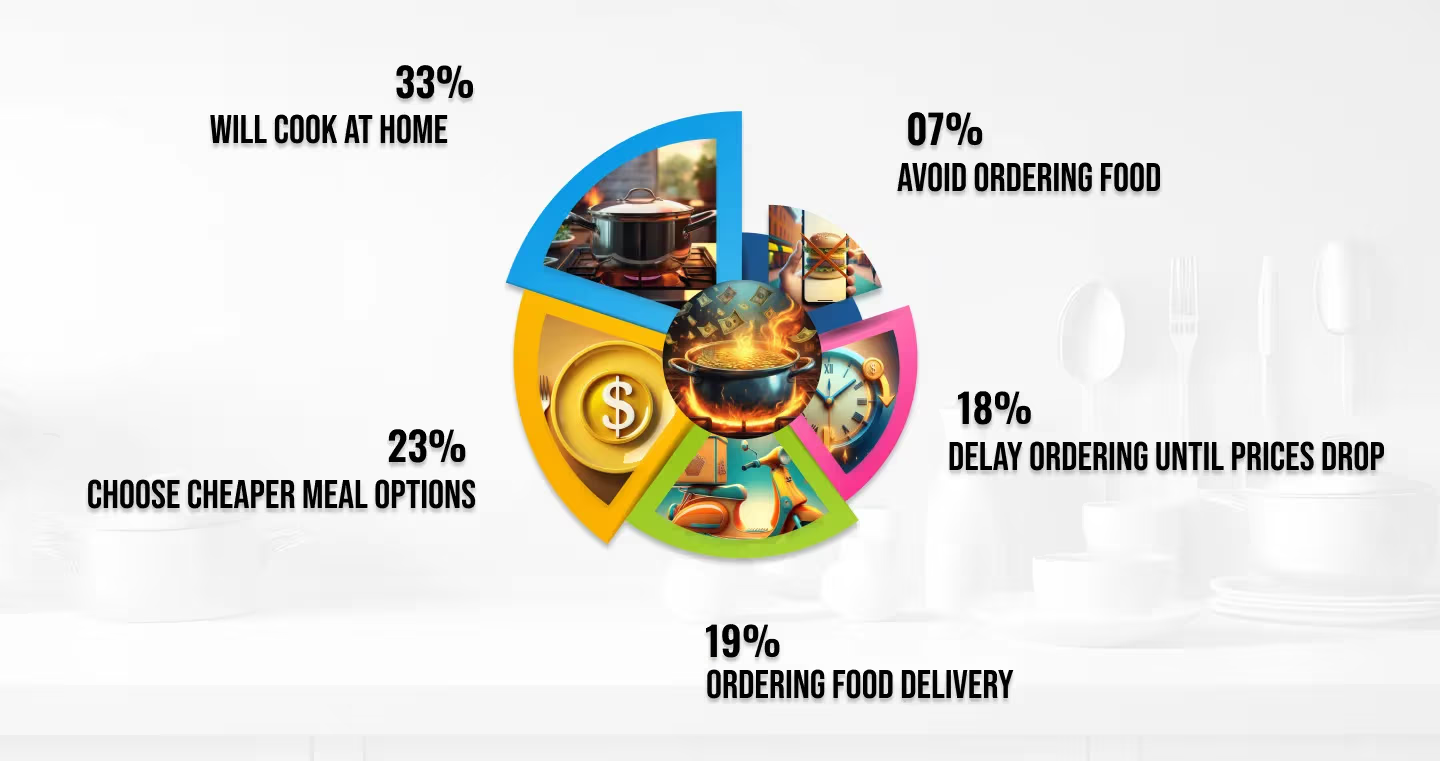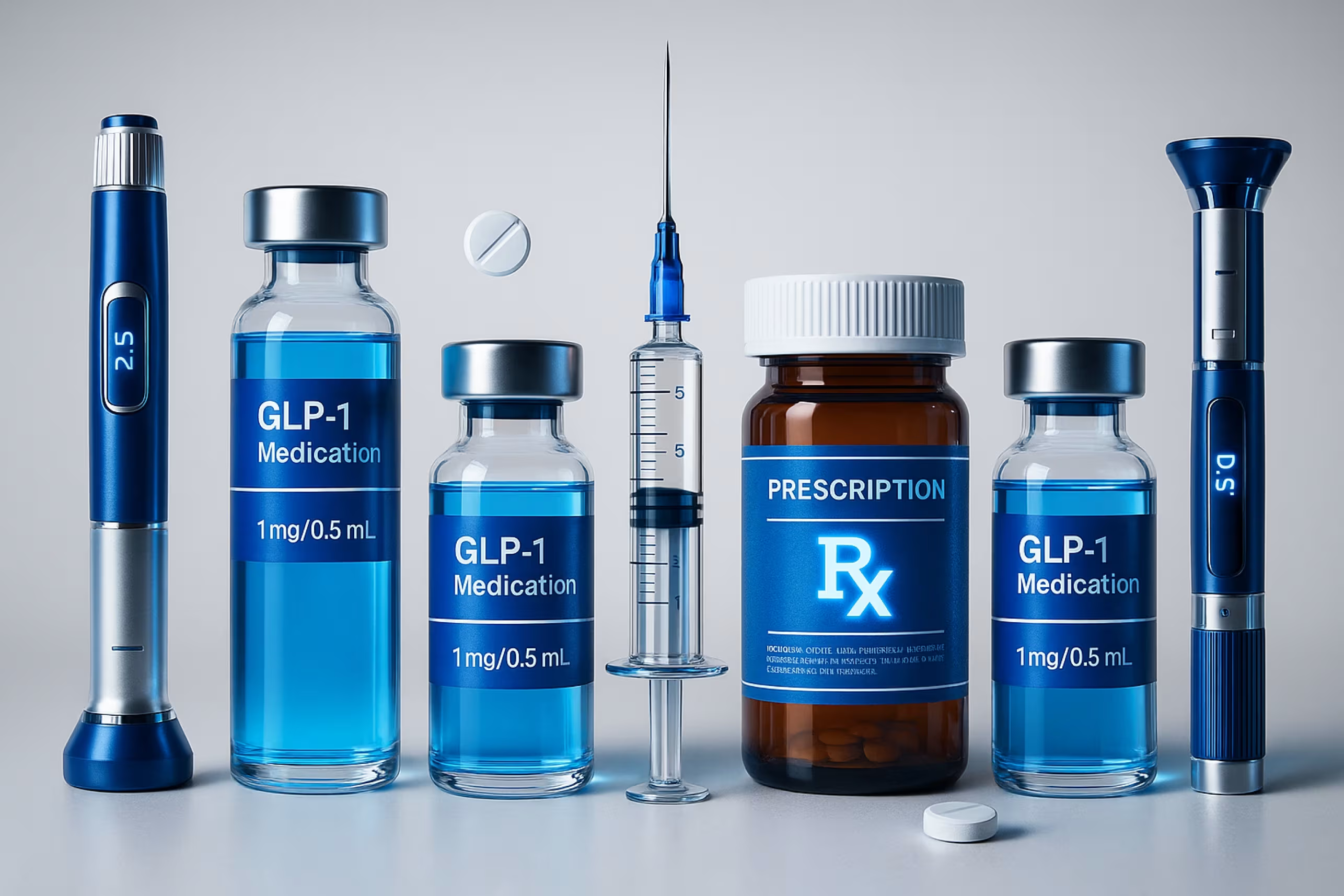Surge Pricing: A Painful Reality

- Consumers are getting burned: The days of predictable pricing are over. More and more people are facing sky-high costs for essential services.
- Companies cashing in: Businesses are loving the extra cash, but customers are feeling the pinch. It's a win-win for corporations, but a lose-lose for consumers.
- Time to adapt: Consumers are learning to live with the surge. From altering travel plans to cooking more at home, people are finding ways to cope with these price hikes.
Driving Us Mad or Just to the Bus Stop?

Implications
- Price Elasticity: The data indicates that transportation choices are influenced by price, suggesting that demand for ride-hailing services might be elastic to price changes.
- Customer Segmentation: There are distinct segments of consumers with different preferences and sensitivities to surge pricing, requiring tailored strategies.
- Public Transportation Competitiveness: The data suggests opportunities for public transportation to attract more riders by offering competitive fares and improved services.
- Surge Pricing Optimization: Ride-hailing companies may need to refine their surge pricing algorithms to balance revenue generation with customer satisfaction.
- Alternative Mode Promotion: Encouraging walking, biking, and public transportation through initiatives like improved infrastructure and incentives could reduce reliance on ride-hailing.
Surge Pricing is Cooking Our Budgets!

Implications
- Price Elasticity of Demand: The data indicates a relatively high price elasticity of demand for food delivery services, with consumers actively seeking alternatives or delaying consumption in response to price increases.
- Consumer Segmentation: There are distinct segments of consumers with varying levels of price sensitivity and preferences for convenience.
- Menu Optimization: Restaurants and food delivery services may need to adjust their menus to offer more affordable options to retain customers during surge pricing periods.
- Loyalty Programs and Promotions: Implementing loyalty programs or offering discounts during off-peak hours can help mitigate the negative impact of surge pricing on customer retention.
- Communication Strategy: Transparent communication about the reasons behind surge pricing and potential cost-saving options can improve customer satisfaction.
Shoppers Hit the Brakes!

Implications
- Price Sensitivity: The data indicates a significant portion of consumers are price-sensitive when shopping online. The prevalence of cart abandonment and the tendency to wait for discounts or compare prices across platforms highlight this behavior.
- Impulse Buying Decline: Surge pricing seems to deter impulse purchases, as evidenced by the relatively low percentage of consumers making more impulse buys during these periods. This suggests that consumers are becoming more cautious in their spending decisions.
- Strategic Shopping: Consumers are adopting strategic shopping behaviors to counteract the effects of surge pricing. This includes comparing prices across platforms, waiting for sales, and even delaying purchases.
- Potential Loss of Sales: While surge pricing can generate additional revenue in the short term, the risk of lost sales due to cart abandonment and delayed purchases cannot be ignored.
- Customer Dissatisfaction: Frequent exposure to surge pricing can erode customer trust and loyalty, potentially leading to long-term negative consequences for retailers.
The Good, the Bad, and the Bottom Line
While surge pricing might feel like a cash grab, there's actually a method to this madness. Let's dive into the reasons behind surge pricing and explore its impact on both consumers and businesses.

Surge pricing has become a pervasive practice across various industries, impacting consumer behavior and business strategies. While it offers benefits for companies in terms of revenue optimization and resource allocation, it also raises concerns regarding consumer welfare and fairness.
To navigate the challenges posed by surge pricing, businesses must carefully balance their pricing strategies with customer satisfaction. Transparent communication, tailored pricing models, and value-added services are essential to mitigate negative impacts and maintain customer loyalty.
As consumers become more aware of surge pricing and its implications, they are adopting strategic behaviors to mitigate its effects. This includes comparing prices, delaying purchases, and seeking alternatives.
In the future, it is likely that surge pricing will remain a prevalent practice, necessitating ongoing efforts to ensure its ethical and responsible implementation. By understanding the complexities of surge pricing and its impact on both businesses and consumers, we can work towards a more equitable and sustainable market environment.








.avif)


